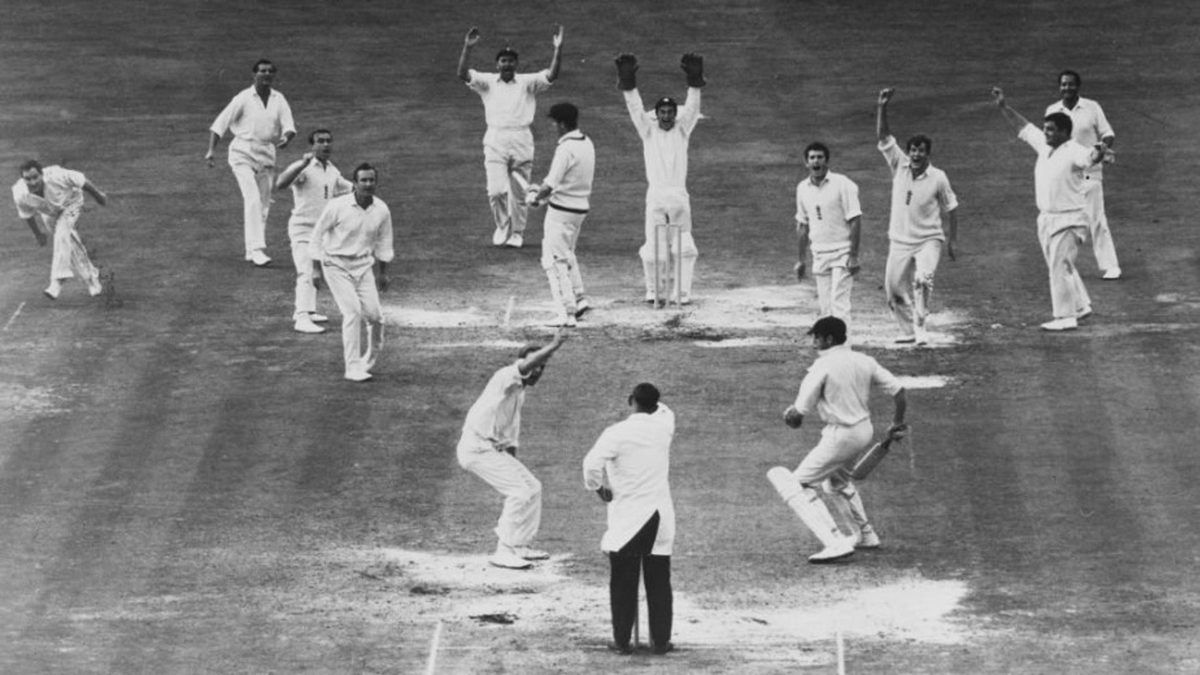
There were 75 minutes to take five wickets to win a Test, on a sodden Oval wicket mopped up that afternoon by ground-staff, players and members of the crowd, as England prayed their victory push would not be thwarted by the storm.
The pitch, the stumps, the umpire, the whites – instantly recognisable, all in a single frame – the visual of England’s glory moment, brought about by their wet-wicket specialist Derek Underwood in the Oval Test of 1968 depicts a varied, but somewhat unified story, writes Ed Kemp.
Already then, the movie script was partly written. As captain Colin Cowdrey crowded the bat, it was wet-wicket specialist ‘Deadly’ Derek Underwood – a man who over 40 years later would invite me into his living room and give me tea while we went over these events – who provided the dramatic climax with 4/6 in 27 deliveries. This stunning image freezes forever the moment of the final wicket, when staunch Australian opener John Inverarity was trapped lbw with minutes to spare. All 11 England players – plus two Australians, umpire Charlie Elliot and some almighty piles of sawdust – are in the frame.
[breakout id=”0″][/breakout]
It’s a remarkable image – strange yet familiar. It’s definitely our game, all the component parts – the pitch, the stumps, the umpire, the whites – instantly recognisable. And yet it appears as if from another world entirely: ancient, remote, unknowable. While the facts of the moment the picture captures were extraordinary, what I love most about it, and others from around this time, is the way it is at once relatable – it looks like a match a club cricketer could play in – and distant, a piece of history – like a tableaux of a medieval battle. It reminds us the game we mortals play at weekends is the same one inhabited by cricketing royalty, connected as part of an eccentric, varied but somehow unified story.
First published in April 2016







